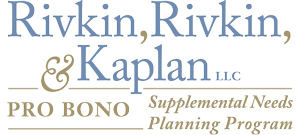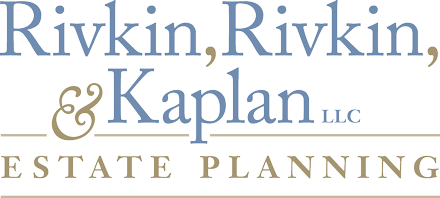If your child has a disability that is expected to last 12 months or longer and that renders them (or might render them as an adult) unable to support themselves, or live fully independently, they might be eligible to receive public benefits now or in the future. Public benefits can be divided into two categories: entitlement benefits and need-based benefits. Entitlement benefits, including SSDI (Social Security Disability Insurance) and Medicare, are based upon the prior work record of a disabled person or their deceased, disabled, or retired parent, and such benefits do not have asset limitations. Need-based benefits, including SSI (Supplemental Security Income) and Medicaid, require that a person with a qualifying disability have only limited assets (generally less than $2,000 if receiving SSI and $17,500 if not, excluding certain exempt assets, such as a home and personal effects) and limited income.
Historically, if parents wished to leave assets in excess of $2,000 for the benefit of their child with special needs, there were only two choices. They could leave assets directly to the child or to a traditional health, support, and education trust for the child’s benefit, in which case the child would be disqualified from SSI and Medicaid until those assets were exhausted. Alternatively, in the hope of preserving needs-based government benefits, parents could leave assets to a sibling of the child with special needs or to another close family member or friend, with the hope that the recipient would use those assets for the child’s benefit. However, the recipient would be under no legal obligation to use the assets for that purpose.
Over the last few decades, a better solution has been developed and enshrined in federal law and the law of most states, including Illinois. Funds for the benefit of an individual with special needs can be set aside in a supplemental needs trust, to be used to enrich the individual’s life without disqualifying the individual from receiving SSI or Medicaid. Supplemental needs trusts come in two varieties, third-party supplemental needs trusts and first-party supplemental needs payback trusts.
A third-party supplemental needs trust (also known as a “third-party SNT”) is created and funded during life or at death by the individual’s parents or other third parties. Trust funds are to be used to enhance the individual’s quality of life by providing goods and services not covered by government benefits. Upon the individual’s death, the government is not entitled to reimbursement from the trust, and the remaining assets in the trust pass to other beneficiaries who were designated by the creator of the trust. A third-party SNT may be funded at the time the trust is created or at a later date, such as the death of the surviving parent.
A supplemental needs payback trust (also known as a “(d)(4)(A) trust” or “OBRA trust,” in reference to the applicable federal statute, a “payback trust,” or a “first-party SNT”) is a way to preserve public benefits if an individual with a disability has or acquires assets in their own name. A payback trust may be created by the individual, the individual’s parent, grandparent, or legal guardian, or by a court, and the individual’s own assets may be transferred to the payback trust before the individual reaches the age of 65 without incurring a penalty for purposes of Medicaid or SSI eligibility. Like the third-party SNT, a payback trust may be used to enhance the individual’s quality of life by providing goods and services that are not covered by public benefits. However, unlike the third-party SNT, if trust assets remain at the individual’s death, Medicaid must be reimbursed from those trust assets for any benefits it provided to the individual during their life.
Although our pro bono program does not include preparation of a supplemental needs payback trust, the program will review the basics of payback trusts, discuss how to minimize the likelihood that a payback trust will be needed, and identify some alternatives to a payback trust.
In general, because public benefits are intended to provide for shelter and medical care, supplemental needs trust funds should not be used for these purposes unless the child’s public benefits, if any, have first been exhausted. In addition, the trustee should not distribute trust assets directly to the child, but should instead use those funds to pay for goods and services that will enrich the quality of the child’s life. For example, the trustee may pay for the child’s dental care, education expenses, home electronics, recreational programs, and travel costs, among many other expenses.
The trust should name persons or charities to receive any remaining assets upon the child’s death, subject to Medicaid reimbursement in the case of trusts funded with the child’s own assets (as discussed in the “Supplemental Needs Payback Trust” section).
The trustee is responsible for investing trust assets, making distributions from the trust for the benefit of the child, maintaining records of all trust income and expenditures, and doing required tax reporting, all in accordance with the terms of the trust agreement and applicable law. The trustee must be careful to administer the trust in a manner that will not cause a reduction or loss of the child’s public benefits.
As a result, one of the most important choices in doing supplemental needs planning is selecting a succession of trustees that have the time, trustworthiness, and financial savvy necessary to serve effectively.
In order for a supplemental needs trust to accomplish its intended purpose, it must be coordinated with your will, your life insurance and retirement plan beneficiary designations, and any other estate planning documents you might have, so that any assets you are leaving for the benefit of your child with special needs will not be distributed to them directly but will instead be directed into the supplemental needs trust. Likewise, if other family members or close friends wish to leave an inheritance to that child, it will generally be advantageous to have them direct that inheritance to the supplemental needs trust.
If you decide to proceed with the planning portion of our pro bono program, we will give you specific implementation instructions to maximize the benefits of your planning.
Under the Achieving a Better Life Experience Act passed in 2014, individuals with a qualifying disability that commenced before age 26 (or as of January 1, 2026, before age 46) may benefit from tax-free savings accounts for their “qualified disability expenses” without interfering with their eligibility for means-tested public benefits. These accounts are known as ABLE accounts.
The ABLE Act was patterned after the prior law authorizing 529 college savings plans, and, like with 529 college savings plans, each state may enact its own ABLE program and may choose to offer that program both to residents of that state and to residents of other states. Illinois and most other states have established ABLE programs. The ABLE National Resource Center summarizes the different state ABLE programs and provides tools to compare those different state programs.
ABLE accounts are subject to certain restrictions, annual funding limits, and administrative requirements, and, in most cases, they are not a complete substitute for supplemental needs trusts. However, for many families that have a child with disabilities, an ABLE account can be a very useful tool.
This chart compares the attributes of ABLE accounts with those of third-party supplemental needs trusts, first party supplemental needs trusts, and pooled trusts.



